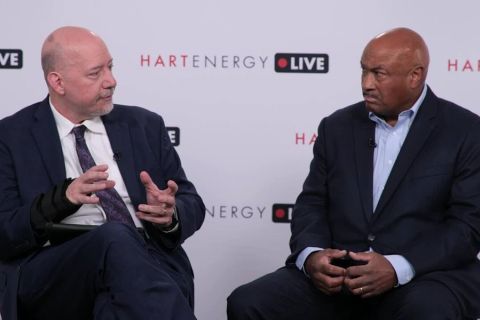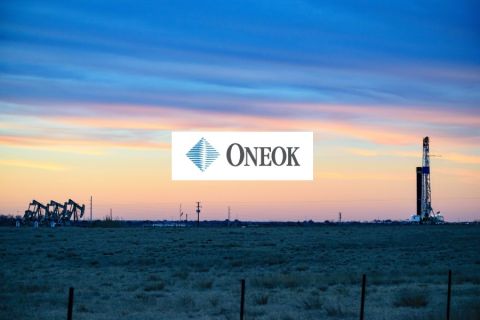 Going into this summer, at least one energy-analyst team thought declining U.S. and Canadian natural gas supplies would drive a tighter gas market and force year-over-year storage inventories lower, to a summer-ending level of 3.46 trillion cubic feet (Tcf).
Going into this summer, at least one energy-analyst team thought declining U.S. and Canadian natural gas supplies would drive a tighter gas market and force year-over-year storage inventories lower, to a summer-ending level of 3.46 trillion cubic feet (Tcf).
However, "our initial assumptions were wrong," says J. Marshall Adkins, director of energy equity research for Raymond James & Associates in Houston.
"We now believe the gas markets could be headed for a late summer meltdown, similar to what we saw last year when gas prices plunged from nearly $8 per thousand cubic feet (Mcf) in early August to around $4 at the end of September," he says. "[This is because] our 2007 summer-ending estimates now show storage levels trending toward a bearish 3.5 Tcf."
The major culprit behind this predicted storage build, he says, is stronger-than-expected productivity from rapidly growing onshore U.S. resource plays such as the Barnett shale, which has temporarily overcome declining core U.S. gas supply.
Given this assessment, the Raymond James analyst team has lowered its near-term gas-price outlook as follows: for third-quarter 2007, $6 per Mcf, down from an earlier $6.50; and for fourth-quarter 2007, $6.50, down from $7.50.
The implication for energy stocks? Given the substantial 2007 outperformance of energy stocks through the end of July-the E&P Index was up about 14% and the OSX Index was up more than 36%-Adkins believes many energy stocks, particularly "gassy" stocks, are at risk during the next couple of months due to bearish short-term gas fundamentals.
"Accordingly, we are taking down ratings on a number of [gas-related] E&P stocks that we believe will be subject to major volatility in the short term."
Meanwhile, a more sanguine take on this issue is offered by Joseph Allman, E&P research analyst for JPMorgan Securities in Houston.
"We understand the arguments for a strong bearish position on natural gas and on E&P stocks," he says. "However, although the 12-month [gas] strip and the E&Ps could drop modestly, a precipitous drop in either as we saw last year, is unlikely to occur."
Allman offers a trio of reasons for his stance: first, the Nymex 12-month gas-futures strip is already well below last year's level; second, E&P stocks have been recently trading at about 15% below fair value; and third, supply/demand factors in the natural gas market will probably get better than worse.
The analyst zeroes in on the Nymex strip as the key to his thesis. He points out that last year, the 12-month strip declined sharply from around $11 to a low of just under $7 in September 2006 and again at the end of the year.
However, with the 12-month strip recently around $7.65, a drop to 2006 levels isn't so severe, the analyst explains. He also notes that, given the hedge positions of E&P companies, near-month prices can fall without affecting activity much, plus the economics of drilling do not allow strip prices to fall very much before many unhedged or disciplined producers reduce their activity.
Elaborating further on the issue, Allman points out that E&P stocks are now cheap. "[These stocks through the end of July] traded at a 15% discount to net asset value, using our price deck of $7 gas and $55 oil. At this point, the potential upside of 15% appears to exceed a potential downside risk of 5%-such that investors will buy these stocks aggressively, as they did after the group's last two corrections of 6% in December 2006-January 2007 and 8% in June-July 2007."
Allman also contends that recent record-setting liquefied natural gas (LNG) imports into the U.S. and milder weather since April-compared with the five-year average-have combined to create an oversupply situation for natural gas.
But LNG imports recently have dropped dramatically due to the demand for them overseas, he observes. Also, normal late-summer conditions-hot weather and hurricane activity-are likely to increase the demand for natural gas, reduce supply and quickly change investor psychology.
It appears that, based on rising gas demand near term, E&P stocks represent a safe harbor for investors.
Recommended Reading
Elliott-backed Amber Energy Picked to Buy Citgo Petroleum for $7.3B
2024-09-27 - Amber Energy, led by industry veterans Gregory Goff and Jeff Stevens, was selected by a court-appointed special master to buy Citgo Petroleum, which is held by a Venezuelan company, for $7.286 billion.
EQT Sells Remaining Pennsylvania Non-op Assets to Equinor for $1.25B
2024-10-29 - EQT’s Northeast Pennsylvania divestiture to Equinor is the second deal between the two companies this year following a large swap of Marcellus assets in April.
Post Oak Capital Backs Permian Team, Invests in Haynesville
2024-10-11 - Frost Cochran, managing partner at Post Oak Energy Capital, said the private equity firm will continue to focus on the Permian Basin while making opportunistic deals as it recently did in the Haynesville Shale.
Lime Rock CEO: Small, Mid Cap E&Ps Stuck in M&A ‘No Man’s Land’
2024-10-16 - Eric Mullins said that as large-scale M&A players begin to rationalize their purchases, as much as $18 billion in non-core divestments could find homes to asset-hungry acquirers.
ONEOK to Acquire Permian’s EnLink, Medallion Midstream for $5.9 Billion
2024-08-29 - ONEOK will acquire Global Infrastructure Partners’ interests in EnLink Midstream and Medallion Midstream, which add scale in the Permian, Midcontinent and Louisiana, in separate transactions valued at $5.9 billion.
Comments
Add new comment
This conversation is moderated according to Hart Energy community rules. Please read the rules before joining the discussion. If you’re experiencing any technical problems, please contact our customer care team.





